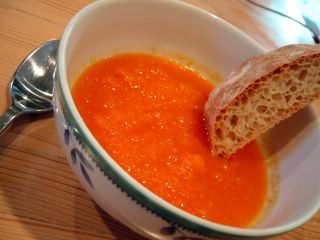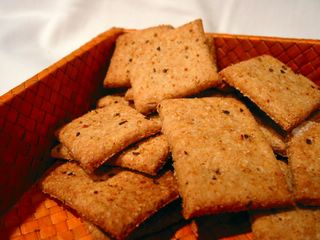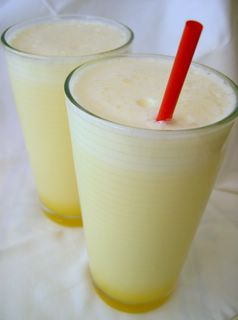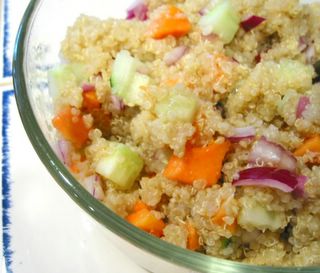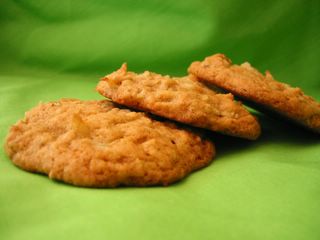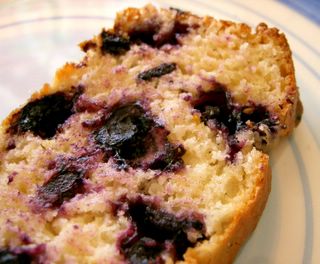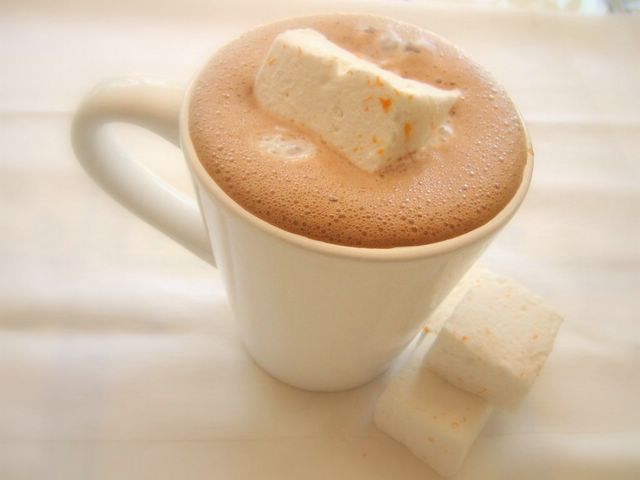
White cakes are very much underrated. It's often hard to find them and many people seem to be under the impression that they will unfailingly be dry and not worth eating. I, on the other hand, love them. Which is why I was so pleased with class today, where we made a beautiful, layered, wedding-style white cake.
Most great cake bakers will have one great recipe for chocolate cake and one great recipe for white cake. Instead of continually modifying the flavoring of the cakes themselves, which could adversely affect the texture, they will create many different syrups, mousses and frostings to add flavor to their cakes. Sponge cakes and genoises, which are not typically used for wedding cakes, will often be dipped in or generously brushed with syrup, both for moisture and for flavor. They will often be filled with a flavored mousse or whipped cream, as these cakes can be stored in the refrigerator because they do not have any (or have very little) fat in them that will solidify at a low temperature. Butter cakes inherently have more flavor than sponge cakes due unsurprisingly to the presence of butter. Because of the added fat, butter cakes are more moist than sponge cakes and will not need syrups for flavor and moisture. They will typically be paired with things like fruit and frostings. If you are layering a butter cake, as we did today, you will probably want to brush it with a simple syrup - a 1 to 1 ratio of sugar and water - as a crumb coat. The syrup can be infused with a flavor, which will have a subtle presence in the finished cake.
We made white cakes and buttercream frosting today. Despite the name, there is no cream in a buttercream. I've never made a true buttercream before, where boiling sugar is added to whipped egg whites, beaten until fluffy and then beaten with butter until smooth. It wasn't terribly difficult, but it had to be beaten in the electric mixer for over 20 minutes, so it was quite noisy. The basic recipe makes a frosting that is not too sweet and very buttery.
Once we made the basic buttercream, we divided and flavored it. You can flavor it with any kind of extract, zest, liquor or puree. We mixed several tablespoons of raspberry puree in to 40 percent of the batch and 1/2 cup lemon curd into the remaining 60 percent. The raspberry buttercream was used in the interior and the lemon curd buttercream went all over the cake. In class, we also made vanilla, lime and coffee buttercreams. If you've only had storebought buttercream, make this one and you'll wonder how they can get away with calling their stabilised sugar mixture "buttercream".
Of course the buttercream tasted fabulous - so fabulous, in fact, that one woman decided to start munching away on the demo cakes and cupcakes that our instructor made. This was odd because lunch had been prepared for us just moments before. Needless to say, the consumption of some of the cupcakes intended for her children prompted the instructor to hide the rest of the cupcakes away. I might also mention that the muncher is the reason that we all have to label our pans now. She was a late addition to the class and seems to feel that anything not labeled is fair game for the taking. We learned that the hard way when she attempted to claim
a tart that looked better than hers.
The highlight of the class was the white cake. It was easy to make and just delightful. A white cake should taste like a cross between an angel food cake, with a light almond-vanilla flavor, and a pound cake, without the heaviness. Simply flavored, sweet, moist with a medium crumb. This is the quintessential white cake. It exceeded all the expectations for cake that I've been carrying around since I was a child, the memory of the way that a Betty Crocker cake should have tasted in a perfect world. Frost it with buttercream or serve with with whipped cream and fresh berries.
I took home one cake box with my cake and a cake box filled with scraps from the cut-off tops of cakes and rejected layers, which I ate in the car on the way home.
White Cake
1 cup milk, room temperature
6 egg whites
1 tsp almond extract
1 tsp vanilla extract
2 1/4 cups cake flour
1 3/4 cups sugar
4 tsp baking powder
1 tsp salt
3/4 cup butter (6 oz), softened
Preheat oven to 350 F.
Grease two 9 inch cake pans with vegetable shortening, line the bottom with parchment paper, grease the parchment paper and flour the pans.
Combine milk, eggs whites and extracts in a small bowl with a fork. Set aside.
Combine flour, sugar, baking powder and salt in an electric mixer and mix at slow speed with a paddle attachment. Add butter. Continue beating at slow speed until mixture looks like wet sand (If you're doing this by hand, sift the dry ingredients together and rub in butter).
Add all but 1/2 cup of milk mixture and beat at medium speed for 1 1/2 minutes. Add remaining milk mixture and beat for an additional 30 seconds, scraping the sides of the bowl if necessary. Do not overmix.
Divide batter evenly between prepared pans and gently shake to smooth batter. Bake 30-35 minutes, until toothpick inserted into the center comes out clean.
Let cakes cool in the pans for 15 minutes then invert onto racks to cool completely before frosting. Unfrosted cakes can be frozen for 1-2 weeks.
Serves 12-16.
Buttercream
1 pound unsalted butter, soft and cut into one inch pieces
3/4 cup and 1/4 cup sugar
1/4 cup water
5 egg whites
1/4 tsp cream of tartar
In the bowl of a stand mixer, place egg whites, with cream of tartar and 1/4 cup sugar nearby.
Heat 3/4 cup sugar and 1/4 cup water in a small saucepan. Heat over medium high heat until sugar is dissolved. When sugar reaches 230F on a candy thermometer, turn mixer on medium high. When egg whites are frothy, add cream of tartar. Gradually add the 1/4 cup sugar. When egg whites begin to form soft peaks, turn the mixer down to medium low and begin to drizzle in the boiling sugar mixture (which should be at approximately 245-250F, firm ball stage). When all of the hot sugar is added, turn the mixer up to medium high and beat until the bowl is no longer warm to the touch. Add the butter one lump at a time and continue beating until mixture is smooth and fluffy, approximately 12-20 minutes. It will look rather like ricotta cheese for a while - just keep beating!
Once it is smooth, stir in flavorings, if desired.
Keep at room temperature - do not refrigerate.
Makes enough to frost one 2 or 3 layer, 8, 9 or 10 inch cake.




